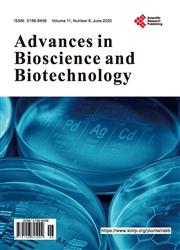Potential of Dictyosphaerium sp. LC172264 Concomitant Remediation of Cassava Wastewater and Accumulation of Lipids for Biodiesel Production
引用次数: 2
Abstract
As a way of making algal feedstock feasible for biofuel production, simultaneous utilization of microalga Dictyosphaerium sp. LC172264 for cassava wastewater remediation and accumulation of lipids for biodiesel production was investigated. The algal biomass, lipid contents and composition were measured from the autotrophic, heterotrophic and mixotrophic cultured algal cells. Physicochemical parameters of the cassava wastewater and bioremediation potentials were measured. Biodiesel properties were deduced and compared with the standards. The results showed that mixotrophic culture was the best for both biomass accumulation (1.022 g/L) and lipid contents (24.53%). Irrespective of the culture condition, the predominant fatty acids were similar and included 11-Octadecenoic acid (vaccenic acid (C19H36O2), oleic acid (C18H34O2) and 14-methyl pentadecanoic acid (isopalmitic acid (C17H34O2). The percentage reduction of total dissolved solids was 79.32% and 89.78% for heterotrophy and mixotrophy respectively. Biochemical oxygen demand was 72.95% and 89.35%, chemical oxygen demand was 72.19% and 84.03% whereas cyanide contents reduced from the initial value of 450 mg/L to 93.105 (79.31%) and 85.365 mg/L (81.03%) respectively. Dictyosphaerium sp. showed good growth and lipid production under mixotrophic condition and produced good quality biodiesel under the three cultivation modes. Even though both mixotrophic and heterotrophic conditions had good promise of cassava wastewater remediation by Dictyosphaerium sp., mixotrophy showed superiority.Dictyosphaerium sp. LC172264协同修复木薯废水及油脂积累的潜力
为了使藻类原料在生物燃料生产中可行,研究了微藻Dictyosphaerium sp. LC172264同时用于木薯废水修复和脂质积累用于生物柴油生产。测定了自养、异养和混合养培养的藻类细胞的生物量、脂质含量和组成。测定了木薯废水的理化参数和生物修复潜力。推导了生物柴油的性能,并与标准进行了比较。结果表明,混合营养培养对生物量积累(1.022 g/L)和脂质含量(24.53%)均有较好的促进作用。无论培养条件如何,主要脂肪酸相似,包括11-十八烯酸(异戊酸,C19H36O2)、油酸(C18H34O2)和14-甲基五烷酸(异棕榈酸,C17H34O2)。异养和混合养的总溶解固形物减少率分别为79.32%和89.78%。生化需氧量为72.95%和89.35%,化学需氧量为72.19%和84.03%,氰化物含量分别从初始值450 mg/L降至93.105 mg/L(79.31%)和85.365 mg/L(81.03%)。在混合营养条件下,Dictyosphaerium sp.均表现出良好的生长和产脂能力,在三种培养模式下均能生产出优质的生物柴油。混合营养化和异养营养化条件对木薯废水的修复都有很好的前景,但混合营养化更有优势。
本文章由计算机程序翻译,如有差异,请以英文原文为准。
求助全文
约1分钟内获得全文
求助全文

 求助内容:
求助内容: 应助结果提醒方式:
应助结果提醒方式:


